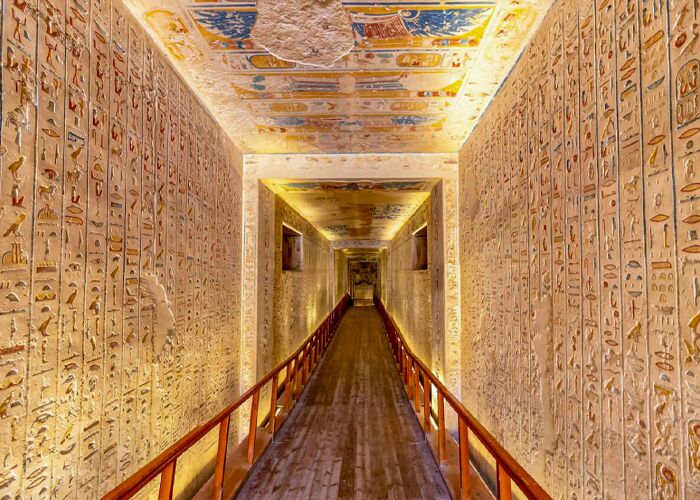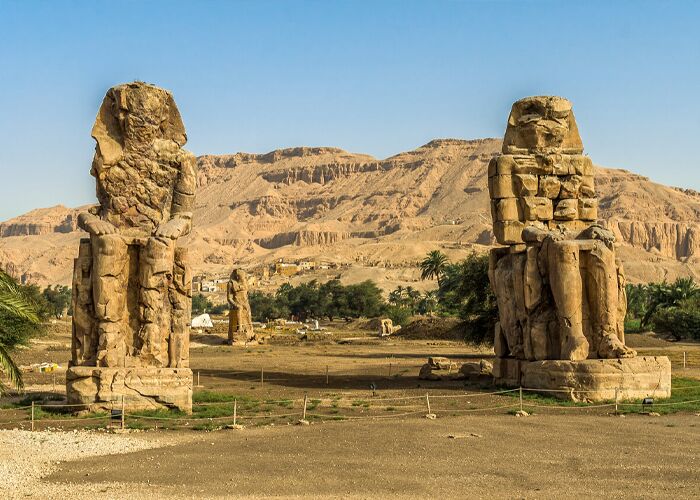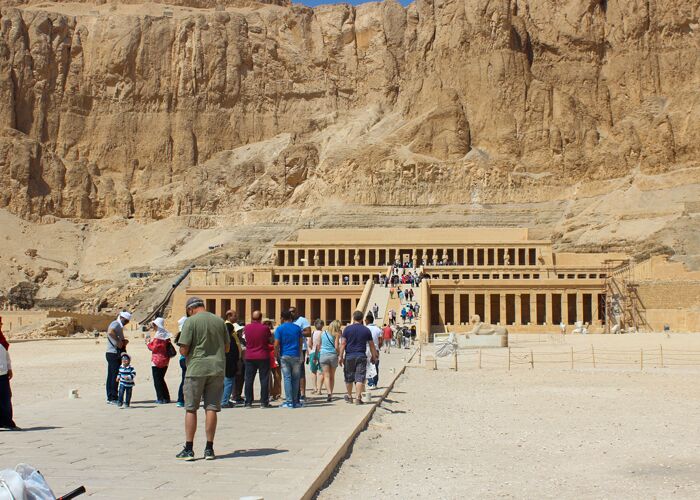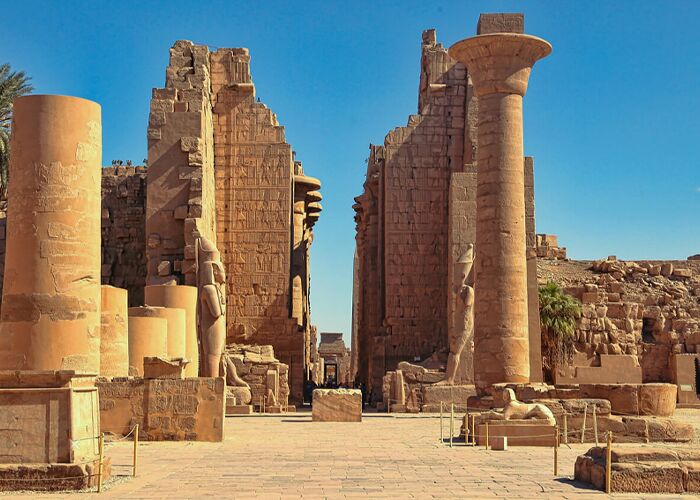Luxor’s Valley of the Kings
The Valley of the Kings is in the middle of a hill in Luxor. It is where the great pharaohs of Egypt’s new empire are buried (1570-1070 BC). From the 16th century BC to the 11th century BC, the 18th, 19th, and 20th dynasties of pharaohs and other important people were buried in the Valley of the Kings.
The Valley of the Kings and Luxor. At the same time, it is a growing modern city and a reminder of Egypt’s past.
People think that the Valley is one of the most important cultural and historical sites from the ancient world. It has about 63 tombs and carved rock chambers that are different sizes and decorated with beautiful scenes from ancient Egyptian mythology and images of their daily lives. These give us information about their history, culture, and religious beliefs during this time, but they were often stolen from by looters and tomb robbers.
Since the late 18th century, this Valley has been a popular place for archaeologists to dig. Its tombs and burial sites continue to attract research and interest to this day. It was put on the list of World Heritage Sites by UNESCO in 1979.
Where the Valley of the Kings was built
It is in the middle of the necropolis of Thebes on the western bank of the Nile, across from the modern city of Luxor. Some Egyptologists and archaeologists think that the shape of the highest point of the Theban hill, which can be seen from the entrance to the valley, must have been the reason why it was chosen to be the Valley of the Kings. It has a west valley and an east valley. Most of the royal tombs are in the east valley.
The Valley of the Kings is on the west side of the Nile, about 18 miles northwest of the centre of Luxor.
How the Valley of the Kings came to be
The remains of ancient kings and queens like Ramses (I, II, III, IV, V, VI, VII, IX, and X), Hatshepsut, Amenhotep I, and the famous young king Tutankhamun were found in the valley.
Thutmosis I was the first pharaoh to be buried in the Valley of the Kings. Ramses X was the last pharaoh to be buried there.
It also has powerful nobles and their wives, children, and other family members.
Their tombs show how rich these pharaohs were, and the writings on the walls tell us a lot about their lives.
The Valley of the Kings is on the west side of the Nile, about 18 miles northwest of the centre of Luxor.
The Valley of the Kings’ most well-known tombs
Tutankhamen
Howard Carter found the Tomb of Pharaoh Tutankhamen, also known as King Tut, in 1922. It is one of the most well-known tombs in the Valley of the Kings. The tomb of Tut is a very important find because the young king’s body was very well preserved.
The tomb was full of amazing things, like King Tut’s perfectly preserved mummy, a solid gold inner coffin, a chariot, the famous golden mask, and a lot more. The tomb had several rooms, but the most important ones were the room for the dead and the room with the treasure.
The burial place of Thutmose III
This tomb is at the far end of the eastern valley. It is thought to be one of the oldest. The tomb is shaped like an oval, and it has beautiful writing and figures all over it.
Ramses III’s grave
It is famous for the paintings of two blind harpists. The Tomb of King Amenhotep I shows that it was common to build tombs near the Nile River. This practise of putting them in different places is probably done to keep people from stealing from their graves and destroying their history.
Ramses VI’s grave
Has a beautiful place to be buried. The ceiling is covered with hieroglyphic writing and pictures of the sky goddess Nut swallowing the sun and spitting it out.
Visit Egypt with Egypt via travel
Check out our Egypt travel packages and choose your amazing trip to Egypt to see these amazing archaeological sites and many other historical tourist attractions in Upper Egypt through a magical cruise on the Nile and its valley. In the land of the pharaohs, have the vacation you deserve.





